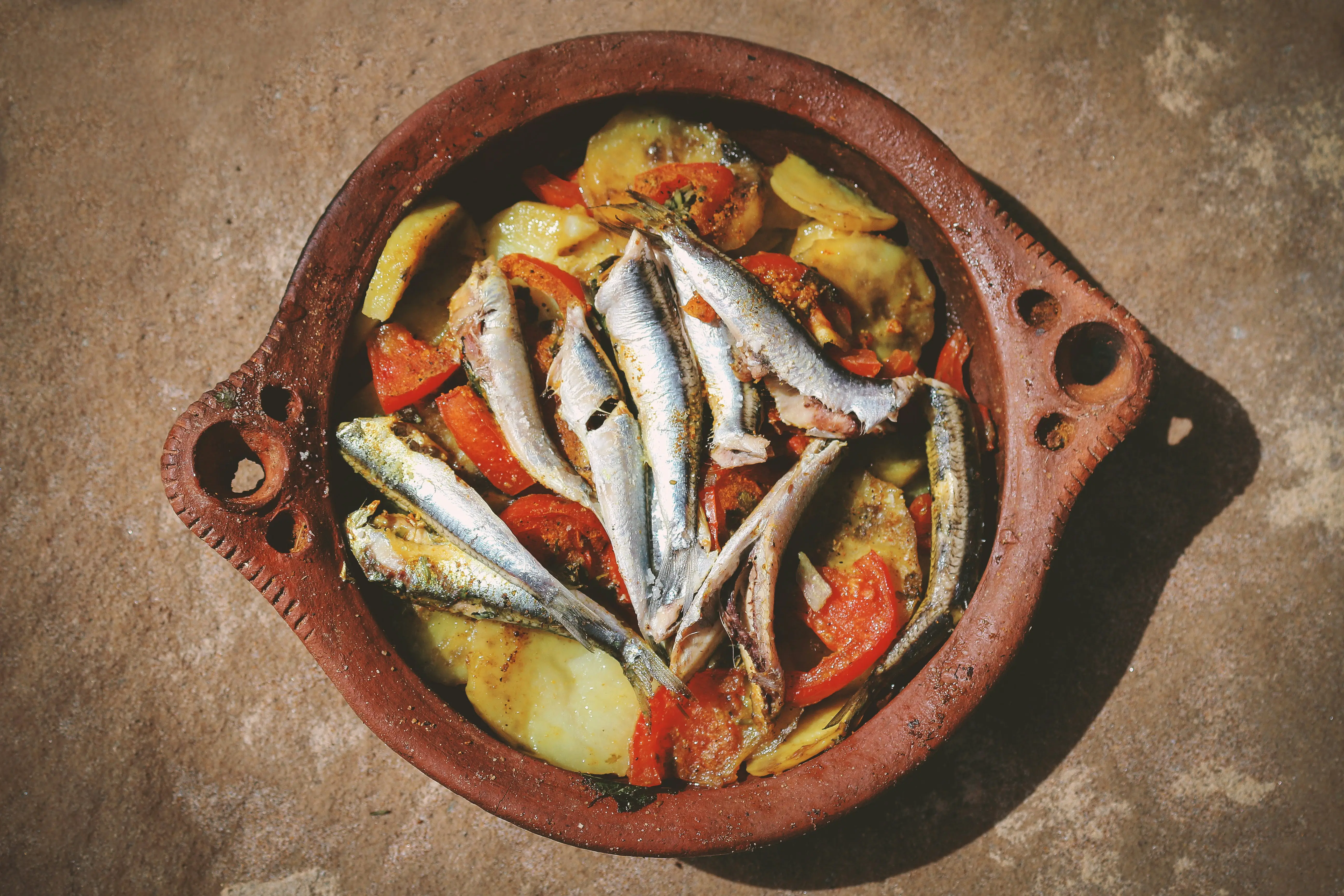Morocco Food Guide: A Culinary Journey Through Traditional Flavors
Moroccan cuisine blends Berber, Arab, Mediterranean, and French influences into one of the world’s most flavorful traditions. From aromatic tagines to delicate pastries, immerse yourself in a gastronomic adventure that delights every sense. Follow this comprehensive guide to explore Morocco’s vibrant food scene like a local.
🌍 Understanding Moroccan Culinary Culture
Philosophy of Moroccan Cooking
- Fresh, quality ingredients: Seasonal produce, aromatic spices, and traditional prep
- Slow cooking: Time-honored methods develop deep flavors
- Balance: Sweet-spicy-salty contrasts and playful textures
- Communal dining: Meals are social, shared experiences
- Hospitality: Food is an expression of welcome
Regional Variations
- Atlantic Coast: Fresh seafood (Essaouira, Casablanca)
- Imperial Cities: Exquisite palace cuisine
- Atlas Mountains: Hearty Berber fare
- Sahara Desert: Preserved meats & oasis flavors
- Mediterranean North: Spanish-Mediterranean fusion
🍲 Essential Moroccan Dishes You Must Try
Main Dishes
Tagine
Cooked in its namesake clay pot, tagine is Morocco’s culinary icon.
Varieties:
- Chicken with preserved lemons & olives
- Lamb with prunes & almonds
- Beef tagine with seasonal vegetables
- Fish tagine with herbs & coastal flair
- Vegetarian tagine: market vegetables in aromatic spices
Couscous
Morocco’s national dish, traditionally served on Fridays.
- Steamed semolina
- Served with vegetables, meat, flavorful broth
- “Seven-vegetable” couscous & sweet “Tfaya” versions
Pastilla (Bastilla)
Sweet-savory phyllo pie with pigeon or chicken, almonds, cinnamon, and sugar.
Variations: seafood or vegetarian with cheese.
Mechoui
Slow-roasted lamb or goat, typically cooked underground and seasoned with cumin & coriander.
Soups & Starters
Harira
Traditional Ramadan soup with tomatoes, lentils, chickpeas, herbs, and optional meat.
Bissara
Berber fava bean soup, flavored with garlic, cumin, and olive oil.
Zaalouk
Roasted eggplant and tomato salad seasoned with garlic, herbs, and spices.
Breads & Grains
- Khubz: round loaves from communal ovens
- Rghaif: flaky layered breakfast bread
- Msemen: square layered bread, often eaten with honey
- Batbout: Moroccan pita-like pocket bread
Bread is sacred—never waste it!
Sweets & Desserts
- Chebakia: honey-coated, flower-shaped Ramadan treat
- Sellou: nutrient-packed almond-sesame-flour mix
- Cornes de Gazelle: almond-filled crescent pastries
- M’hencha: coiled almond pastry with cinnamon sugar
🍵 Beverages: From Mint Tea to Fresh Juices
Atay (Mint Tea)
Morocco’s national drink and symbol of hospitality.
- Green tea, fresh spearmint, and sugar poured from height
- Served three times, each with varying strength—refusing is impolite!
Coffee Culture
- Qahwa: Robust espresso-style coffee
- Nous nous: half coffee, half milk
- Coffee spiced with cardamom or cinnamon
Fresh Juices
- Orange juice on every corner
- Seasonal favorites: pomegranate, mixed fruit combinations
- Traditional drinks: almond milk, tamarind juice, rose water
🌿 Spices & Seasonings: The Soul of Moroccan Cuisine
Spice Blends
Ras el Hanout
A masterful 30-spice mix, often including cumin, coriander, ginger, rose petals, and more.
Chermoula
Herbaceous sauce for fish: cilantro, parsley, garlic, saffron, and lemon.
Key Spices
- Saffron: prized and rare
- Preserved lemons: signature tang in tagines
- Argan oil: “Morocco’s liquid gold”
- Harissa: adds a North African heat
🍽️ Dining Customs & Etiquette
Traditional Dining
- Shared dishes—eat from your section only
- Wash hands (rose water or gel) before eating
- Use your right hand; tear bread into pieces
- Compliment the cook—it’s appreciated
Meal Structure
- Breakfast (ftour): Bread, tea/coffee, honey/jam
- Lunch (ghda): Bread, salad, main dish, then tea
- Dinner (asha): Often soup-based (e.g., harira), bread, fruit
Restaurant Types
- Traditional “Dar” restaurants: Tagine/couscous menus, tourist-friendly
- Local Eateries: Affordable, authentic, minimal English
- Street Food: Fresh, fast, and local favorites—choose busy stalls
- Modern Restaurants: Fusion menus, wine served in tourist areas
🧼 Food Safety Tips
- Start slowly: let your gut adjust
- Drink bottled water first week; avoid ice
- Eat hot, freshly cooked food
- Avoid lukewarm buffets
- Peel fruit yourself
- Choose busy, clean street vendors with local clientele
🍽️ Where to Eat
Marrakech
- Al Fassia: Traditional, women-run
- Chez Ali: Dinner show + cuisine
- Dar Yacout: Elegant palace dining
- Jemaa el-Fnaa: Iconic evening street stalls
Fes
- The Ruined Garden: Charming garden setting
- Cafe Clock: Famous camel burger + modern Moroccan
- Medina eateries: family-run and authentic
Essaouira
- Port grills: fresh seafood
- Rooftop Taros
- Fish market stalls
Casablanca
- Rick’s Cafe: Movie nostalgia
- La Sqala: Fortress-style dining
- Central market eats
🍳 Cooking Classes & Food Experiences
- Riad cooking classes
- Market tours + cooking
- Family-home experiences
- Spice & tea ceremony workshops
You’ll Learn
- Tagine technique, bread-making, spice blending, preserved lemon and mint tea prep
🛍️ Shopping for Food & Spices
- Souks: Spices, produce, dried fruit, nuts
- Supermarkets: Imported goods & familiar items
- Look for: aroma, vibrant color, high turnover
- Spices & oils: Ras el hanout, saffron, preserved lemons, argan oil
- Pack properly: vacuum-sealed spices, sturdy containers
🌱 Dietary Restrictions & Vegetarian Options
- Vegetarian/vegan friendly: Veg tagines, soups, couscous
- Speak clearly about allergies—learn phrases in Arabic/French
- Halal: No pork; wine in tourist areas
- During Ramadan: Fewer services daytime
📅 Seasonal Specialties & Food Festivals
- Spring: Green almonds, artichokes, fresh herbs
- Summer: Stone fruits, melons, tomatoes
- Autumn: Pomegranates, dates, citrus
- Winter: Oranges, root vegetables
Festivals
- Erfoud Date Festival
- El Kelaa M’Gouna Rose Festival
- Sefrou Cherry Festival
🏡 Bringing Morocco Home
- Buy: spice blends, saffron, preserved lemons, argan oil, tagines, tea glasses, nuts, pottery
- Customs: declare food items; keep receipts
- Pack: sealed spices, sturdy containers, liquid restrictions in carry-on
🎉 Conclusion
Moroccan cuisine is a journey into flavor, tradition, and community. From tagines in Marrakech to seafood on the coast, every bite tells a story—of hospitality, local life, and centuries of culinary heritage.
Ready to savor Morocco’s flavors? Contact Overjoy Morocco Travel to plan your food-focused adventure—cooking classes, market tours, family dinners, and unforgettable dining experiences await.
Hungry for authentic Moroccan experiences? Join our culinary tours featuring cooking classes with local families, guided market tours, and exclusive dining experiences. Contact us to create your perfect food-focused Morocco adventure.


